Tekkonkinkreet
Introduction
The popularity of anime in the West can't be discounted, and it's fair to say that the Japanese anime industry wouldn't be half as rosy were it not for foreign interest and investment. But there is something of a creativity gap, a line that is rarely crossed. The Japanese make the shows and sell them to the West, where distributors hire talent to direct and act in English dubs, usually with a little Japanese studio input to see that their original vision isn't strayed from (understandable given Battle of the Planets and Robotech). Sometimes Western distributors initiate projects, and supply the majority of the investment, as ADV did with Samurai Gun, and occasionally shows are built around, and with the anticipation of certain talent, as Afro Samurai was tailored for Samuel L. Jackson. But creative cross-collaboration is a rare occurrence, and the sort of co-productions like Mysterious Cities of Gold seem to be a thing of the past. We still get high profile crossovers like the Animatrix and the recent Gotham Knight project, but even in situations like these, there is a gap (usually language, often Pacific) between collaborators. Tekkonkinkreet is different, with a Western director at the head of, and working side by side with a Japanese studio to bring a Japanese story to the screen. It offers an unprecedented blending of visions and delivers something truly unique. Of course it helps that director Michael Arias is a long time resident of Japan, is fluent in the language and well versed in the culture.
Tekkonkinkreet is based on the manga Black and White, and tells the story of Treasure Town, a run down and outdated island community in the middle of a city, where gangs vie for control, and the area is ruled over by the Cats, a.k.a. delinquent street kids Black and White. White is a young innocent of a child, always in a dream world, while Black has always taken care of his friend, is tough and world-wise, and takes pride in guarding 'his' town. While White is empathic and in tune with the city, Black is strong and springs like an acrobat across the roofs of the city. But their town is under threat by some bigger guns now, as the Yakuza have set their eyes on Treasure Town, are ready to tear it down to rebuild it in their image, and have a ruthless foreign investor on their side. The devilish Snake has his own plans for Treasure Town, and won't stop at a couple of brats who stand in his way. But Black is overly protective of White, and doesn't realise how well they work as a team.
Picture
Tekkonkinkreet gets a splendid 2.35:1 anamorphic transfer. It's a rare aspect ratio to see anime in, but it works brilliantly here to showcase the dynamic and vibrant animation. The director deliberately chose to film the animation like a live action film, and in a medium dominated by locked off static visuals, Tekkonkinreet's cameras are practically always in motion, whether with subtle camera shake for a documentary style, or swooping camera moves over cityscapes. While the film itself is a blending of 2D and 3DCG visuals, as is the norm for modern anime, it still puts pure 3D efforts to shame in terms of vigour. The character designs are idiosyncratic, reflecting the original manga, but are also unlike what you usually expect from anime. There's very much a European feel to the character design, a more experimental look than traditional anime. The world design is excellent, with Treasure Town a wholly realised environment that pieces together elements from all over South and East Asia. Some of the rooftops wouldn't be amiss in the Middle East, while a lot of the iconography and imagery comes straight from Hindu mythology. The town has a feel of yesteryear, very much a community stuck in the sixties and seventies, and the bright optimistic look contrasts with the run down state of things and the bleak tone of the story.
The image quality is excellent, certainly the best that DVD can deliver, and as this is a film to PAL transfer, there are no issues with ghosting or softness, the pans are smooth, and digital banding and compression artefacts are wholly absent. The level of detail is high, and the animator's desire to make this look like an older cel-animated production comes across with clarity. The only way to get a better experience than this would be to go Blu-Ray.
Sound
You have a choice of DD 5.1 English, Japanese and German, along with a whole cavalcade of subtitle language options, including both translated and HOH English subtitles for the film. The sound quality matches the visuals, with a fully immersive and vibrant soundtrack that makes good use of the soundstage to convey the film's effects and music. The music is quirky, but suits the film down to the ground. I sampled the English dub and it is as good as the Japanese track, with performances that suit the characters and a strong cast of voice actors.
Extras
"You wouldn't fondle a giraffe would you? You wouldn't fardle a bear?" Yeah, one of those discs. Fortunately you can skip the crap, and go straight to the disc, which contains a nice selection of extras.
A Conversation with Director Michael Arias and British Rock Duo Plaid sees the threesome interviewed for 12 minutes. This is presented with burnt in Japanese subs for the domestic audience, but you have the option for soft subs in English if you are hard of hearing. The musicians talk about scoring the film, and the rarity of getting rushes to work from, which made the experience a two-way collaborative process for musicians and director.
The Making of Tekkonkinkreet - Director Michael Arias 300 Day Diary is condensed down to 43 minutes, and offers a behind the scenes look at the making of the film, with interviews with the cast and crew. An interesting point is the nightmare caused by viewing the rough cut. Again there are hard Japanese subs for the occasional bit of English verbiage, but as most of this is in Japanese, you'll have to make use of the optional English subtitles.
The commentary for the film features director Michael Arias, screenwriter Anthony Weintraub and Sound Designer Mitch Osias. It's pretty dry and technical at times, and goes into the making of the film once more. It's one of those commentaries with a fair bit of dead air, more umming and ahhing from the speakers, which makes it a fairly difficult listen, but there is some useful information to be had. It's subtitled in English, German and Dutch, should you feel the need.
The extras conclude with trailers for Steamboy and Paprika, while you may find an ode to the wonders of Blu-ray slipped inside the Amaray case.
Conclusion
Tekkonkinkreet is an amazing visual experience, a film that pushes the boundaries of what can be accomplished with traditional 2D animation. It conveys a strikingly inventive and colourful world with breathtaking elegance, and that coupled with the excellent soundtrack makes it a truly memorable experience. Unfortunately, what won't be memorable is the story, which is thin and hackneyed, with nothing new to offer, along with the characters that lack development and depth, turning out to be little more than ciphers. Tekkonkinkreet is that all too familiar disappointment of style over substance,
That isn't necessarily a bad thing, after all my anime collection would be thin indeed were I too weed out the flashy visuals in sole favour of narrative depth, but where Tekkonkinkreet falls down for me is that ever elusive emotional hook. I was initially overawed by the visuals, but when it came to the story it was something a little more than academic interest, but never the emotional investment that a story like this requires. I think an uncertain emphasis didn't help, with some characters antagonistic at one moment, then supposedly sympathetic the next. The Yakuza characters who come in to take over Treasure Town initially appear to be villainous, then the boss turns out to be a nostalgic that's looking back at his life and trying to reassess his priorities. His right hand man who is supposed to take care of Black and White and spread a little poison about town, turns out to be a father-to-be who looks up at his boss as a father figure, while being blackmailed by the foreign investor, Mr Snake. Snake is drawn like a stereotypical devil figure, with no redeeming qualities, so the character ambiguity stops there, but where such ambiguity may have added depth and layering to the story, here it just distracts from the central duo of Black and White.
Black and White turn out to be like Rain Man and his delinquent brother, with White the naïve and somewhat out-there childlike innocent, while Black is the ruthless boss of the streets. To make things interesting, the two have abilities that stretch to superpowers, both are surprisingly robust and agile, and White is the emotional empath, who can feel what is happening in the city, while Black is a sort of teenage Batman, bestriding the city like an avenger, taking his own painful brand of justice to anyone who would venture onto his turf. The emotional hook is here, or at least supposed to be, as Black is circling his own darkness, his penchant for violence is gradually turning him into the people he fights against, while it's only the presence of White, who he has taken care of as far back as he can remember, which reminds him of the good in the world, and keeps him grounded. But, what should have been a constant and gradual build up in tension, a coherent character study, turns out to be sporadic and haphazard. The film occasionally tugs on the heartstrings, but then it loses its grip, and with it any poignancy.
But Tekkonkinkreet is a painfully beautiful film. You have to watch it at least once just to appreciate the artistic vision. It's just when it comes to a second time… You can get a second opinion by reading Matthew Smart's review of the Blu-ray release.
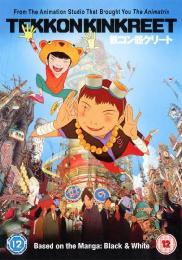
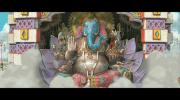
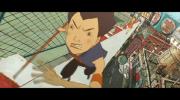















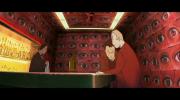





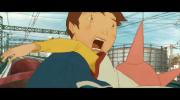

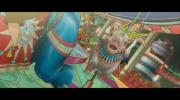



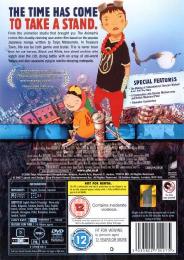

































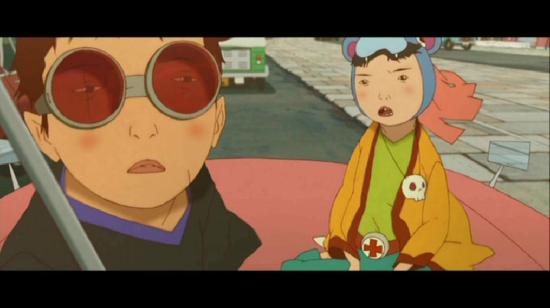





Your Opinions and Comments
Egg. Face. Splat.